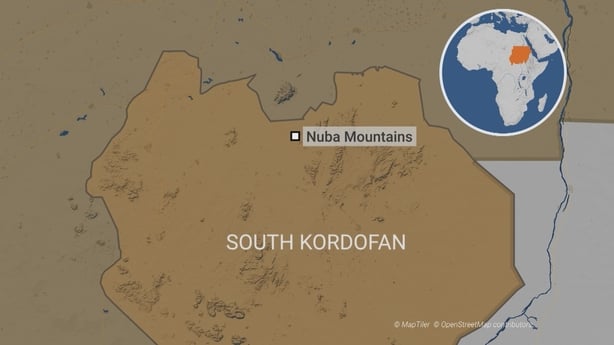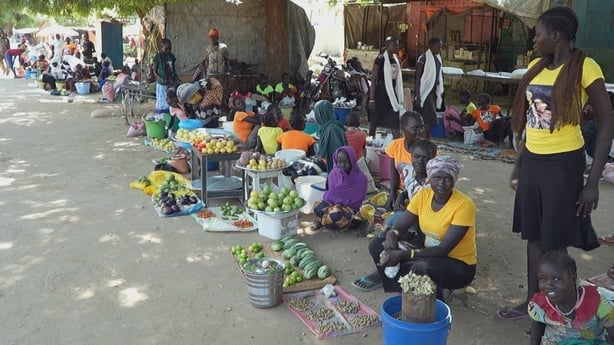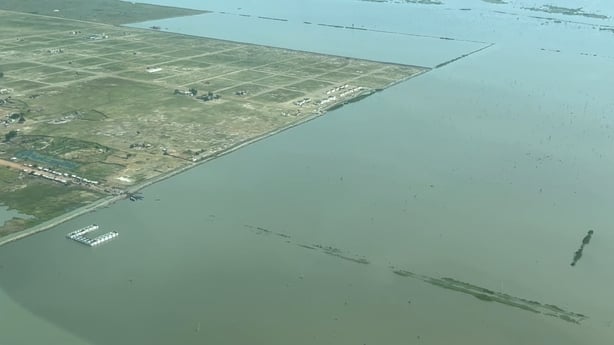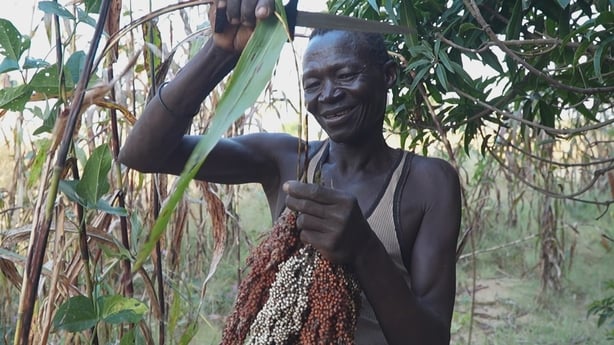Aid agencies say Sudan is suffering the worst humanitarian catastrophe in recent history, yet the crisis in the northeast African country remains unknown to most of the world.
Reporter Aengus Cox and cameraman Enda O'Byrne visited Sudan to witness the desperate conditions that people are living in.
"Some of them we saved, but there are some where they had severe malnutrition ... we tried to save them, but we couldn't. We have seven children under five who died from malnutrition, and more and more patients will die."
This assessment from health clinic head Elizabeth Philip Kori might seem pessimistic but, based on what she has witnessed since Sudan's civil war broke out 20 months ago, she would argue she is just being realistic.
Elizabeth is in charge of the Trócaire-run Amdulu Health Centre nestled in the Nuba Mountains.
Many of those who have fled war have gathered in this rural area, with a displacement camp gradually springing up.
Now the health facility helps around 25,000 people - more than double what it used to cater for.
We need your consent to load this rte-player contentWe use rte-player to manage extra content that can set cookies on your device and collect data about your activity. Please review their details and accept them to load the content.Manage Preferences
More than half of Sudan's 50 million people are affected by food insecurity, and malnutrition is killing adults as well as children.
"We received some women who were pregnant," the clinic head tells me, but "because of hunger and the distance they had to walk, they had abortions, miscarriages, bleeding, severe bleeding, and many of them had anemia.
"There is no proper food to eat, maybe there are 10-12 days walking to reach here, and they are only eating some grasses along the road, and that is the reason why they are so much malnourished."
"They have a miserable life," she adds, and fears many more will die as a result of hunger.

Sudan's civil war has decimated agricultural supply chains and crop production.
Food is much harder to access, and more expensive.
This is something very much on the radar of Marcella Kray, Emergency Coordinator with Médecin San Frontièr in Sudan.
"I think one of the major things you see is very hard economic times for almost every person living in the country. People have left their homes, they don't really have any means for livelihood anymore. And this has led to too many different problems," she says.

"One of the major ones that we see is malnutrition, and that is partly because there is no food, but maybe even more sadly because the food that is available is actually not accessible to people because they just can't afford to buy it."
This reality plays out at markets in the Nuba Mountains, where a watermelon costs around €10 - that's equivalent to almost a monthly salary here.
But war is not the only threat to Sudan's food supply.

As we fly above the vast landscape, we see much of it flooded.
Normally the rainy season runs for six months; from May to October.
However, in recent years it has become less predictable, with huge levels of rain one year and very little the next.
Either situation is devastating for crops.

We visit a group of farmers who are preparing to harvest sorghum. It is the main crop in Sudan and is largely used to make flour.
Households rely on it as the main staple, and it is abundant with plenty of fertile land to plant it.
But with the climate here getting more volatile, that dependency is problematic.
Last year, there was a shortage of rain and most of the supply was lost, exacerbating the hunger crisis.
Aid agencies are teaching farmers to diversify what they grow to reduce the dependency on sorghum.

Peter Aryui, Food security and livelihoods coordinator for Trócaire in Sudan, is one of the people leading the charge in this regard.
He says: "We are working with the farmers to enhance their productivity and support them to adopt good agricultural practices.
"The idea is diversification, the introduction of new varieties of sorghum and other crops, as well as vegetables. Farmers are already seeing an increase in production and have more food at a per-household level."
Diversification is gradually helping, with more resilient foods being grown - including tomatoes that are drought and pest resistant.
But there is a long way to go to avert a deepening food crisis here. Despite the progress, the country's food supply remains unstable.
Peter warns: "Looking at the fact that there was poor production last year, and because of the closing of markets and the influx of people here, the food supply at the farm level and - even in the market - is still very low. We're expecting more hunger in the coming few months."








